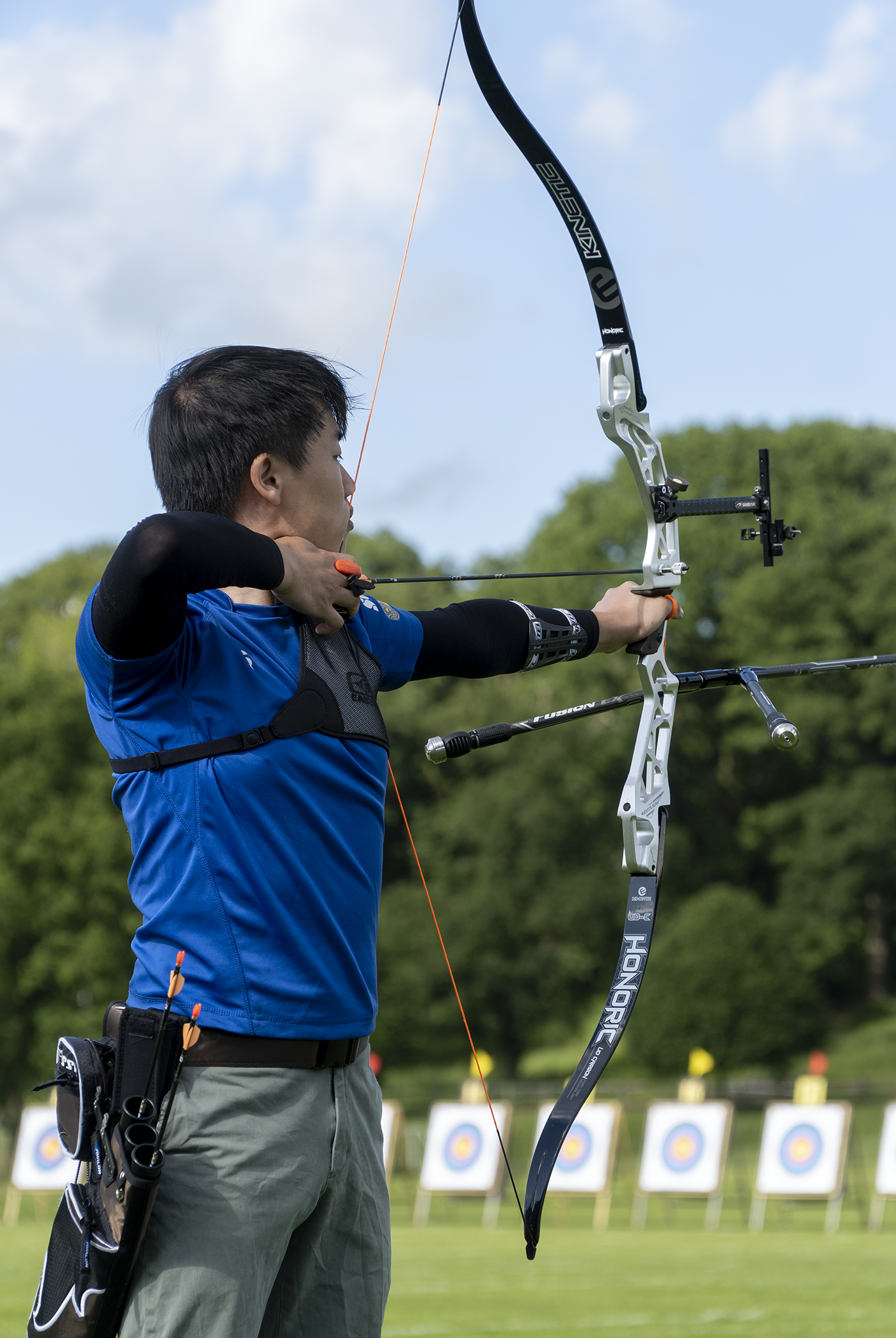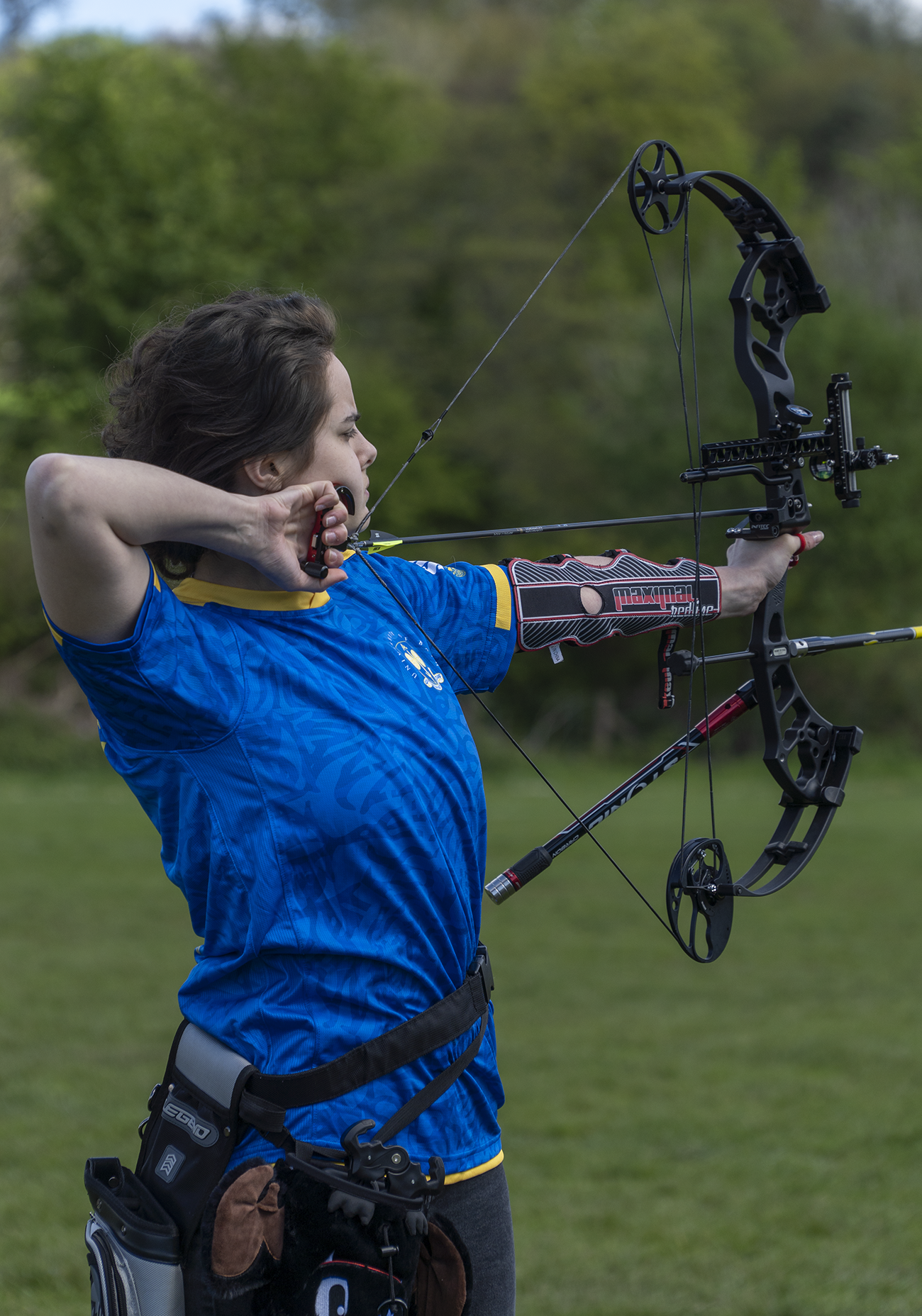Bow styles
Recurve
A recurve bow has tips that curve away from the archer when the bow is strung, resulting in the string touching a section of the limb. The double curve acts as an extra spring and gives more power. The limbs are usually made from multiple layers of fiberglass, carbon and/or wood on a core of carbon foam or wood. The riser (the centre section of the bow) is generally separate and is constructed from wood, carbon, aluminium alloy or magnesium alloy. Risers for beginners are usually made of wood or plastic.
string touching a section of the limb. The double curve acts as an extra spring and gives more power. The limbs are usually made from multiple layers of fiberglass, carbon and/or wood on a core of carbon foam or wood. The riser (the centre section of the bow) is generally separate and is constructed from wood, carbon, aluminium alloy or magnesium alloy. Risers for beginners are usually made of wood or plastic.
Freestyle
A Recurve Freestyle archer (often referred to as Recurve) uses a recurve bow with a Sight, Stabilisers and often a Clicker attached (see picture). When shooting Freestyle, the fingers a placed on the string with one finger above the arrow, and the rest below. The anchor point is under the chin. This is the only bowstyle that is currently permitted at the Olympic games, and is the most common.
Recurve Barebow
A Recurve Barebow archer (often referred to as Barebow) uses a recurve bow with no sight or stabilisers. The only additional equipment that is permitted is a pressure button and a small weight. When shooting Barebow, all fingers are placed below the arrow; moving the fingers up and down the string adjusts the height of the arrow on the target. The anchor point is at the corner of the mouth for most distances; however a chin anchor point can be used for longer distances.
 Compound
CompoundA bow with eccentric wheels/cams on the ends of the limbs connected by cables (see picture). The cams have the effect of reducing the weight of the bow at full draw. A 50 lb bow with 60% let off would only have a holding weight of 20 lb. The bow reaches its peak weight of 60 lb as it is being drawn but the weight held on the fingers at full draw is only 20 lb. This reduces the strain on the bow arm and enables the bow to be held steadier thus improving the aim. On release the weight rapidly increases from 20 lb to 50 lb accelerating the arrow.
Longbow
A longbow is a type of bow that is tall (roughly equal to the height of the person who uses it); this will allow its user a fairly long draw, at least to the jaw. A longbow is not significantly recurved. Its limbs are relatively narrow so that they are circular or D-shaped in cross section. The longbow is based on the late medieval English longbow in use during the 12th to 16th centuries. The historical longbow was a self bow, often made from yew. Modern longbows may also be made from modern materials.